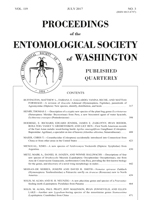BioOne.org will be down briefly for maintenance on 14 May 2025 between 18:00-22:00 Pacific Time US. We apologize for any inconvenience.

No abstract available
No abstract available
Nematus appalachia Smith (Hymenoptera: Tenthredinidae) Feeding on Fagus grandifolia Ehrh. (Fagaceae)
No abstract available
No abstract available
